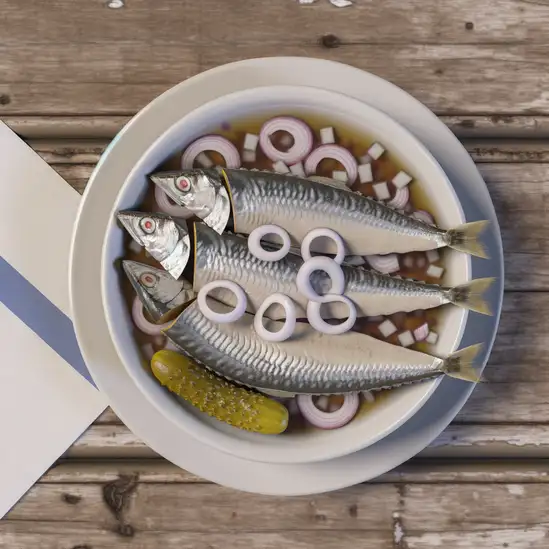



If you wander into Haarlem,you immediately feel like you’ve stepped into a storybook town where history and modern life dance effortlessly together. The air carries a gentle mix of fresh canal water and the faint aroma of freshly baked stroopwafels from a nearby bakery. As you stroll along cobblestone streets,the soft clatter of bicycles mingles with the distant chime of church bells,creating a soundtrack that’s both lively and soothing. Haarlem’s charm lies in its intimate scale and warm,welcoming vibe. The city’s golden brick buildings,adorned with intricate gables,lean slightly over narrow streets,inviting you to explore cozy cafés and quirky boutiques tucked away in unexpected corners. The Grote Markt,the bustling heart of the city,buzzes with locals sipping coffee at outdoor terraces,while street musicians add a spontaneous soundtrack to your afternoon. What really sets Haarlem apart is its rich cultural pulse. It’s a place where art seeps from every corner—whether you’re admiring masterpieces at the Frans Hals Museum or catching a live jazz set in a snug cellar bar. And don’t miss the local markets,where the scent of fresh flowers and ripe cheese fills the air,tempting you to sample the flavors of the region. Haarlem feels like a warm embrace,a city that invites you to slow down,savor the moment,and discover stories woven into every brick and breeze.
The information on this page is currently being reviewed by Tripkliq and should be used as a guide only
Eng word: Hello
Eng pronunciation: hah-loh
Local language: Hallo
Eng word: Goodbye
Eng pronunciation: toht zeens
Local language: Tot ziens
Eng word: Thank you
Eng pronunciation: dahnk yuh
Local language: Dank je
Eng word: How much
Eng pronunciation: hoo-veel
Local language: Hoeveel
Eng word: Toilet
Eng pronunciation: twah-let
Local language: Toilet
Eng word: Help me
Eng pronunciation: help may
Local language: Help me
Eng word: Yes
Eng pronunciation: yah
Local language: Ja
Eng word: No
Eng pronunciation: nay
Local language: Nee
Eng word: Excuse me
Eng pronunciation: par-don
Local language: Pardon
Haarlem was officially granted city status in 1245 by Count William II of Holland, making it one of the oldest cities in the Netherlands.
In the early 17th century, Haarlem was at the center of the tulip bulb-growing district, playing a crucial role in the tulip mania, the first recorded economic bubble.
The celebrated Dutch Golden Age painter Frans Hals lived and worked in Haarlem, where he produced many of his masterpieces, now displayed at the Frans Hals Museum.
The Teylers Museum, established in Haarlem in 1778, is the oldest museum in the Netherlands, famous for its extensive collection of art, fossils, minerals, and scientific instruments.
The Grote Kerk or St. Bavo Church is a Gothic church located in the city center, famous for its magnificent Müller organ from the 18th century, one of the world's most historically important organs.
The historic home of the Ten Boom family, known for hiding Jews during World War II, is now a museum. This place shares the remarkable story of courage and faith in turbulent times.
Dating back to 1266, Haarlem was granted the right to ship a single barrel of beer to Amsterdam without charge. This and the herring fishery were major economic drivers in the city’s history.
In 1647, the ship Haarlem stranded near Table Bay, which led to the establishment of a refreshment station by the Dutch East India Company and eventually the founding of Cape Town, South Africa.
A former church converted into a brewery, café, and restaurant, the Jopenkerk is a unique blend of Haarlem’s rich brewing history and modern craft beer culture, reviving ancient recipes from the city’s archives.
In Haarlem, the most common Power Adaptor is Type C, Type F.



A popular Dutch snack consisting of deep-fried balls filled with a mixture of beef or veal ragout, often served with mustard.

Small, fluffy pancakes that are slightly sweet and typically served with powdered sugar and butter.

Raw herring fish, typically served with onions and pickles, often eaten by holding the fish by the tail and taking a bite.

A traditional Dutch treat made of two thin waffles filled with a caramel-like syrup, best enjoyed warm.

Battered and deep-fried pieces of cod, usually served with a garlic or tartar sauce, popular as a street food snack.

Thick-cut fries topped with a combination of mayonnaise, satay sauce, and chopped onions, creating a delicious mix of flavors.
Imagine stepping into a city where every corner feels like a story waiting to unfold. Amsterdam has this effortlessly charming vibe—laid-back yet buzzing with life. As you wander along its iconic canals,you’ll hear the gentle splash of bike tires on cobblestones and the soft murmur of conversations spilling out from cozy cafés. The air carries a mix of fresh bread from nearby bakeries,the faint aroma of blooming tulips,and sometimes,the earthy scent of rain on old bricks. It’s a place that invites you to slow down and soak in the moment.
The city’s character is a beautiful blend of old-world charm and modern creativity. You’ll find centuries-old canal houses leaning slightly,their tall,narrow facades telling tales of merchants and artists from long ago. Yet,just around the corner,vibrant street art and innovative galleries pulse with contemporary energy. Amsterdam’s culture feels open and welcoming—people here cycle with a relaxed confidence,and there’s a genuine warmth in the way locals share their city.
Don’t miss sitting at a waterside café with a steaming cup of rich Dutch coffee and a slice of stroopwafel,watching boats drift lazily by. The city’s rhythm is unhurried but never dull,inviting you to explore its museums,markets,and hidden courtyards at your own pace. Amsterdam isn’t just a place to see—it’s a place to feel,taste,and live for a little while.
If you wander into Rotterdam,you’ll immediately notice its bold,unapologetic energy—a city that’s constantly reinventing itself with a fresh,modern pulse. Unlike the quaint,storybook charm of other Dutch cities,Rotterdam feels like a vibrant canvas splashed with daring architecture and buzzing creativity. The skyline is a jagged dance of glass and steel,with the iconic Cube Houses tilting playfully and the Erasmus Bridge stretching like a sleek swan over the water. It’s a place where old harbor grit meets futuristic design,and that contrast gives the city a unique heartbeat.
As you stroll along the Maas River,the salty breeze mingles with the aroma of fresh stroopwafels from a nearby market stall,and the hum of bicycles weaving through the streets blends with the distant clang of cranes working the port—the largest in Europe. The city’s cultural scene is alive and kicking,from edgy street art splashed across warehouse walls to cozy cafés where you can sip rich Dutch coffee while watching locals debate passionately about football or art.
What really sticks with you about Rotterdam is its spirit of resilience and innovation. It’s a city that rose from the ashes of World War II bombings,and that history is woven into its character—bold,open-minded,and welcoming. Whether you’re exploring the vibrant food markets,catching a live jazz show,or simply people-watching in a sunlit square,Rotterdam invites you to experience a fresh,dynamic side of the Netherlands that’s as warm as it is exciting.
If you wander into The Hague,you’ll immediately notice a unique blend of stately calm and vibrant life humming beneath the surface. It’s a city where grand government buildings and international courts stand shoulder to shoulder with cozy cafés and leafy parks. The air often carries a faint salty breeze from the nearby North Sea,mingling with the rich aroma of fresh stroopwafels and strong Dutch coffee wafting from street vendors. Walking along the canals,you’ll hear the gentle clatter of bicycles and the soft murmur of locals chatting in a mix of Dutch,English,and other languages,giving the city a wonderfully cosmopolitan yet approachable feel.
What really makes The Hague special is its balance between history and modernity. You can spend your morning exploring the impressive Mauritshuis museum,where Vermeer’s "Girl with a Pearl Earring" seems to watch you back,then stroll over to the buzzing Plein square for a lively lunch surrounded by locals and diplomats alike. The city’s parks,like the sprawling Haagse Bos,offer peaceful green escapes where you can hear birdsong and feel the crunch of leaves underfoot.
Evenings in The Hague have their own charm—whether it’s savoring fresh seafood at a harbor-side restaurant or catching a live jazz set in a tucked-away bar. The city doesn’t shout for attention but invites you to slow down,soak in its layers,and discover a place that feels both worldly and warmly familiar. Trust me,once you’ve experienced The Hague’s understated elegance and friendly pulse,you’ll want to come back for more.
If you’re craving a place where the rhythm of life slows down just enough to savor every moment,Gemeente Texel is your kind of spot. Imagine stepping off the ferry and being greeted by endless stretches of sandy beaches,the salty breeze teasing your hair,and the distant call of seabirds weaving through the air. Texel isn’t just an island; it’s a breath of fresh,salty air that instantly makes you feel grounded and alive. The landscape is a patchwork of dunes,quaint villages,and wide-open skies that stretch so far you almost forget the world beyond.
Walking through the charming streets of Den Burg,the island’s main town,you’ll catch the scent of freshly baked bread mingling with the earthy aroma of local cheeses. The markets buzz with friendly chatter,and you can’t help but be drawn into cozy cafés where the locals sip strong coffee and share stories. Texel’s culture feels deeply connected to the sea and the land — from the fishermen’s tales to the farmers’ markets,everything here has a genuine,heartfelt vibe.
What really makes Texel stand out is how it invites you to slow down and truly experience nature. Whether you’re cycling past blooming fields,spotting seals lazing on the shore,or tasting the island’s famous lamb,there’s a comforting sense of belonging. It’s a place where you can lose track of time,breathe deeply,and leave feeling like you’ve found a little piece of peace.
If you wander into Utrecht,you’ll immediately feel this lively,cozy buzz that’s hard to pin down but impossible to ignore. The city’s heart beats along its canals,where old wharfs have been transformed into quirky cafés and boutique shops,their terraces spilling out with people sipping coffee or local craft beers. The scent of fresh bread from nearby bakeries mingles with the crisp air,inviting you to slow down and soak it all in. It’s a place where history and modern life dance effortlessly together—medieval towers stand tall against a backdrop of vibrant street art and bustling markets.
Walking through Utrecht’s narrow streets,you’ll hear the gentle clatter of bicycles weaving past,the chatter of students from the university,and the occasional street musician adding a soundtrack to your stroll. The city’s charm lies in its intimate scale; you can explore the entire center on foot or bike,discovering tucked-away courtyards,cozy bookshops,and lively squares where locals gather. Don’t miss climbing the Dom Tower—the view from the top is breathtaking,revealing a patchwork of red rooftops and green parks stretching out in every direction.
What really makes Utrecht special is its warmth and authenticity. It’s not just a place to see but a place to feel part of. Whether you’re savoring a stroopwafel fresh off the griddle or chatting with a friendly barista,you’ll find a genuine,welcoming spirit here that stays with you long after you leave.
Leiden feels like stepping into a storybook where history and everyday life blend effortlessly. As you wander along its narrow canals,the gentle ripple of water mirrors centuries-old facades,each brick whispering tales of scholars,artists,and explorers. The air carries a subtle mix of fresh bread from cozy bakeries and the earthy scent of nearby gardens,inviting you to slow down and savor the moment. It’s a city that hums quietly with curiosity and warmth,where bicycles glide past quaint cafes and the chatter of locals spills onto cobblestone streets.
What’s truly captivating about Leiden is its vibrant intellectual spirit—home to the oldest university in the Netherlands,the city buzzes with youthful energy and a deep respect for knowledge. You’ll find yourself drawn into lively bookshops,tucked-away museums,and lively markets where fresh flowers and local cheeses tempt your senses. The architecture is a charming patchwork of Renaissance buildings and modern touches,giving the city a timeless yet fresh feel.
Evenings in Leiden have their own magic. Picture sitting by the canal with a glass of Dutch beer or a cup of rich coffee,watching the golden light dance on the water as the city softens into a peaceful glow. It’s a place that invites you to explore slowly,to listen closely,and to feel connected—not just to the city’s past,but to its warm,welcoming pulse today.
Scammers may install skimming devices on ATMs to steal card information. Tourists are advised to use ATMs inside banks for safety.
Scammers posing as charity workers may approach tourists asking for donations. These 'charities' are often fake, and the money goes directly to the scammer.
Unlicensed guides may offer cheap tours but provide little value or mislead tourists about local history and culture.
Scammers may sell fake tickets for museums, attractions, or public transport at inflated prices. These tickets are often invalid or overpriced.
Shops in tourist-heavy areas may sell souvenirs at inflated prices, targeting tourists unfamiliar with local pricing.
Unlicensed taxi drivers may overcharge tourists by taking longer routes or not using a meter. This is more common near train stations or tourist hotspots.
Pickpockets often target tourists in crowded areas like Grote Markt, train stations, or busy shopping streets. They use distractions to steal wallets, phones, or other valuables.
Some street performers may demand payment after a performance, even if the tourist did not agree to pay beforehand.
The Netherlands has a unique approach to drug policy, distinguishing between 'soft' and 'hard' drugs. In Haarlem, as in the rest of the country, the sale and consumption of small amounts of cannabis (up to 5 grams) is tolerated in licensed 'coffeeshops.' However, it is illegal to consume cannabis in public spaces, and doing so can result in fines. Hard drugs, such as cocaine, ecstasy, and heroin, are illegal and strictly prohibited. Possession, sale, or use of hard drugs can lead to severe legal consequences.
In Haarlem, as in the rest of the Netherlands, smoking is prohibited in all public indoor spaces, including bars, restaurants, and public transportation. There are designated smoking areas in some public places, but it is important to look for signs indicating where smoking is allowed. Smoking is also banned in many outdoor areas, such as playgrounds and near schools. Violating these rules can result in fines.
Vaping is subject to similar regulations as smoking in Haarlem. It is prohibited in indoor public spaces and public transportation. Some establishments may have designated areas for vaping, but it is always best to check for signs or ask staff. Vaping is also restricted in certain outdoor areas, similar to smoking.
What are other people saying about Haarlem?
Recent Social posts about Haarlem
There is nothing to show you for now.